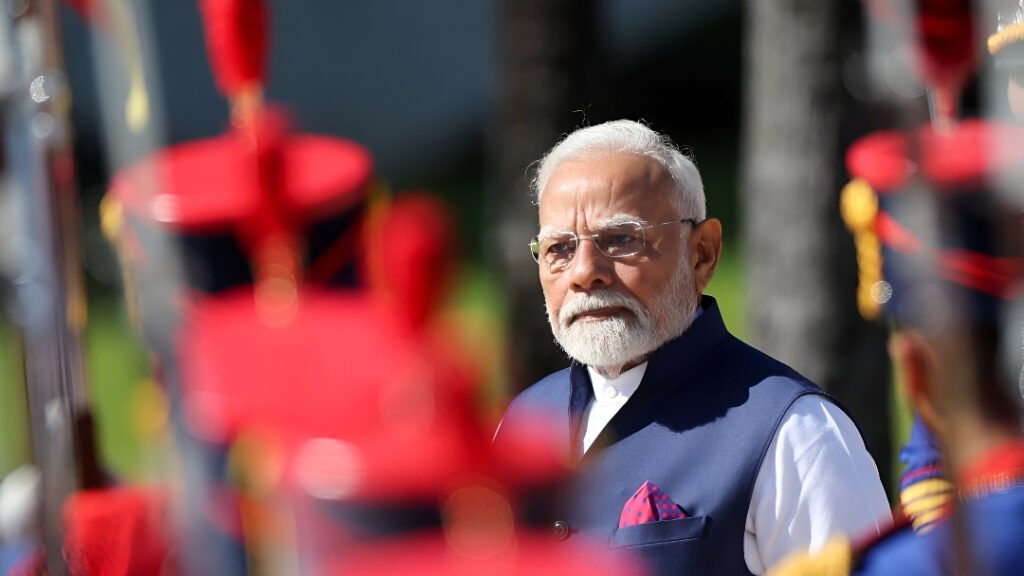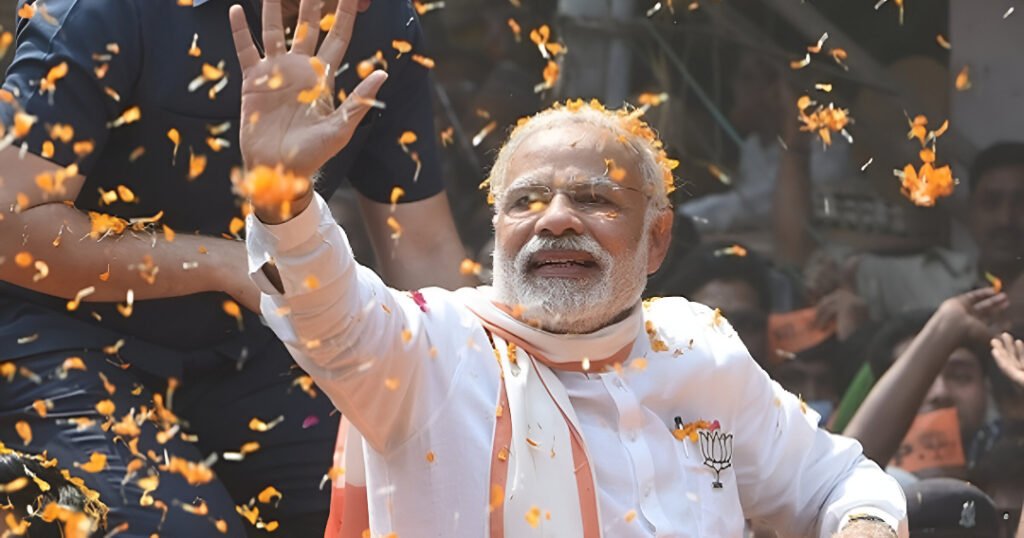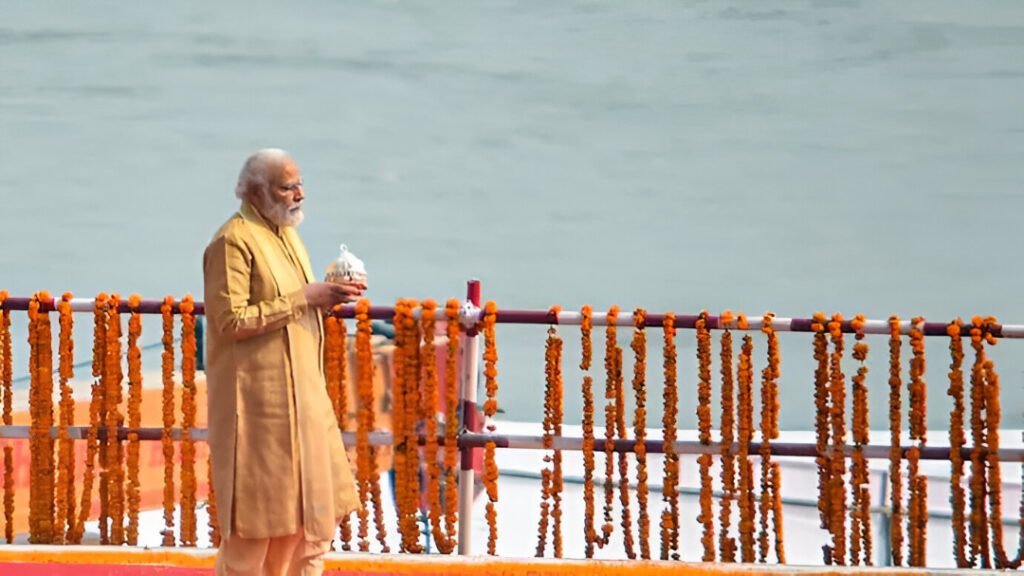Varanasi is more than a city. To millions of Indians, it is an old, holy, crazy living soul, but deeply entwined with religion. It is the city where pilgrims come to find salvation by the Ganga, where rituals become a part of life’s rhythm, and where each of its narrow alleys carries centuries of tales. And in 2014, this holy city became the backdrop for one of the greatest political odysseys of contemporary India.
It was March 14, 2014, when the Bharatiya Janata Party announced that its prime ministerial candidate, then Gujarat Chief Minister Narendra Modi, would contest from Varanasi. Until then, Varanasi’s politics had been dominated by regional heavyweights and complex caste equations. The incumbent MP, Murli Manohar Joshi, had barely won in 2009. For many, Modi’s decision to enter this battleground was surprising. He could have comfortably contested from Vadodara, a safe seat in his home state. But he chose Kashi.
When Modi arrived in Varanasi on April 24, 2014, his first words struck an emotional chord: “Na kisi ne mujhe bheja hai, na main yahan aaya hoon, mujhe toh Maa Ganga ne bulaya hai” (Nobody has sent me here; Mother Ganga herself has called me). For a city where spirituality flows with the river, this was more than a campaign slogan; it was a promise of belonging.

A Political Gamble with Symbolism
Choosing Varanasi was both risky and symbolic. The city wasn’t a BJP fortress. In fact, in the 2012 assembly elections, the party had delivered patchy results here. Even Joshi had almost lost to Mukhtar Ansari, a local strongman. But Modi wasn’t merely contesting a seat; he was weaving a larger story. Political observers believe his decision was meant to show that he was more than a regional leader from Gujarat. By embracing Varanasi, one of the world’s oldest living cities and a spiritual heart of Hinduism, Modi signaled his intent to be seen as a pan-Indian leader tied to India’s civilizational ethos.
The gamble worked. His campaign electrified eastern Uttar Pradesh. Roadshows turned into massive spectacles. Crowds spilled over every ghat, every street, chanting his name. And when he won not just Varanasi but also Vadodara, he chose to keep Kashi. That decision alone was symbolic; it showed where his political and emotional anchor now lay.
Development Meets Devotion
Over the next decade, Modi’s repeated visits to Varanasi (52 so far) brought with them a flood of development projects. Roads were widened, underground cabling removed the ugly clutter of hanging wires, and the ring road eased traffic for locals. Two cancer hospitals, a trade facilitation center, and an international convention hub gave the city a modern touch. The Kashi Vishwanath Corridor, perhaps the most ambitious of them all, connected the ancient temple directly to the ghats, offering pilgrims both convenience and grandeur.
But it wasn’t just about infrastructure. Modi also reimagined how rituals could be celebrated. The Ganga Aarti, once a local tradition, was elevated into a national spectacle. Visiting foreign dignitaries, from Japanese Prime Minister Shinzo Abe to French President Emmanuel Macron, joined him at the ghats, witnessing a blend of spirituality and statecraft. For locals, it was surreal to see their city becoming a global stage.

Voices from the City
“Kashi adopted PM Modi, and Modi made Kashi his home,” says Shashi Mishra, a long-time resident. For him, the relationship feels personal, almost like a bond between a leader and his people.
Rajendra Kumar Gupta, a local entrepreneur, points to everyday improvements: “Cleanliness has improved tremendously. The ring road has changed the way traffic flows. Encroachments were reduced. Life feels smoother now.”
For others, the transformation is more emotional. Shatarudra Prakash, a former legislator, says, “Varanasi was once dismissed as a crumbling pilgrimage town. Today, it is a showcase of development wrapped in cultural pride. The city’s identity itself has changed.”
A Ripple Across Eastern UP
What happened in Varanasi didn’t just stay in Varanasi. The political message resonated across Purvanchal and even adjoining Bihar. The BJP, once weak in this region, suddenly surged, building an unshakable base. In both 2014 and 2019, the party and its allies swept the belt, breaking years of dominance by regional parties like the Samajwadi Party and the Bahujan Samaj Party.
The results weren’t accidental. As political scientist Shashi Kant Pandey notes, “By contesting from Varanasi, Modi merged Hindutva symbolism with developmental politics. It gave him both cultural legitimacy and a new political foothold.”

The City and the Leader
More than ₹52,000 crore worth of projects have been launched in Varanasi over the last 11 years. Six foreign heads of state have walked its ghats. The city is cleaner, more connected, and more visible on the global map than ever before.
But, above all figures, the romance between Modi and Varanasi is one of mutual adoption. The leader selected the city not only for politics but also for its soul. And the city, reciprocating, bestowed upon him legitimacy, loyalty, and love.
With dusk settling over the ghats and the start of the Ganga Aarti, Varanasi remains its ageless self, unfazed by centuries, spiritual, and timeless. But today, there are the added sounds of development schemes, the glint of cameras snapping pictures of visiting dignitaries, and the subdued pride of residents who sense their city has entered a new era.
For them, Varanasi remains Kashi. But it is also Modi’s Kashi now.











